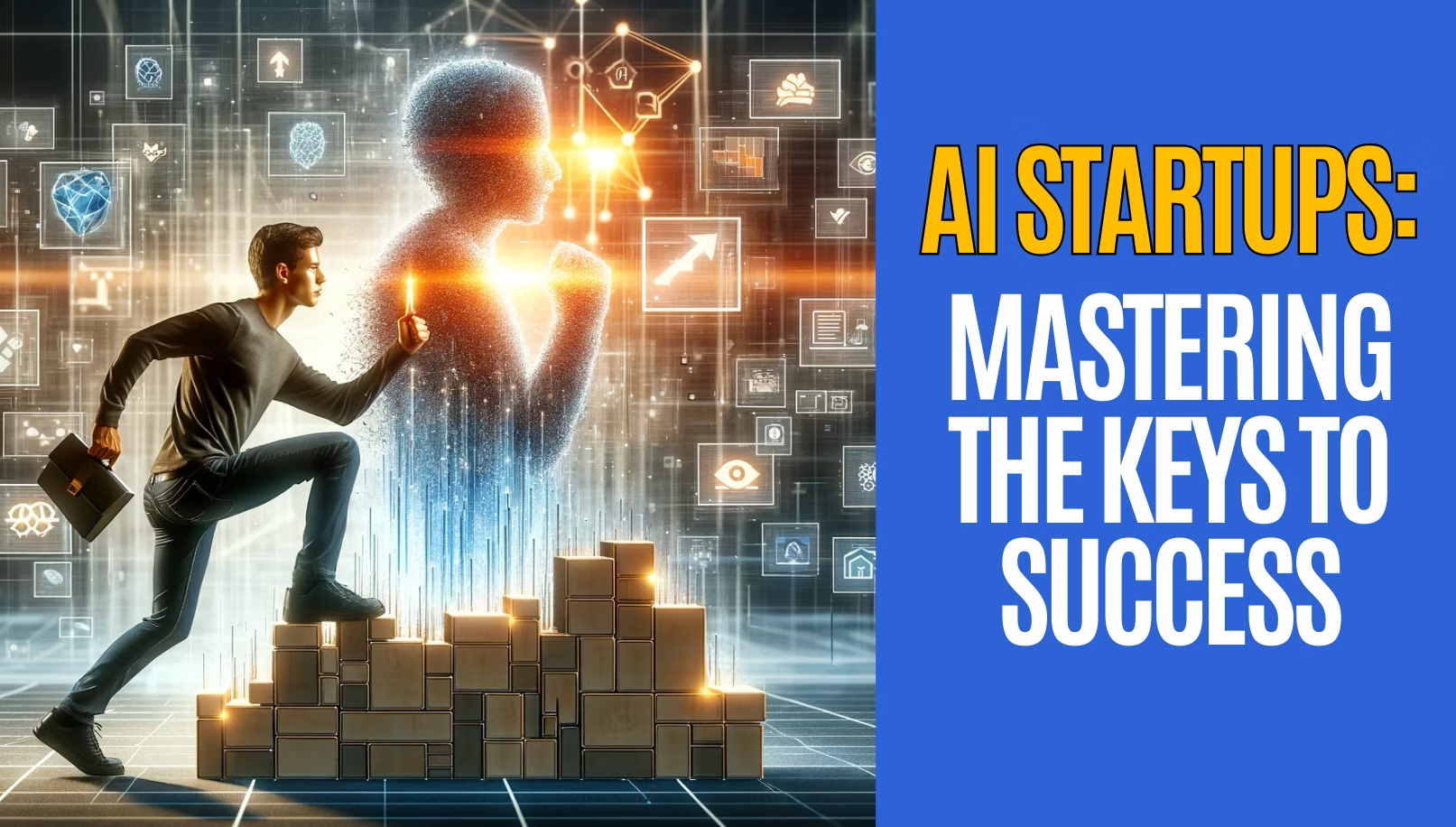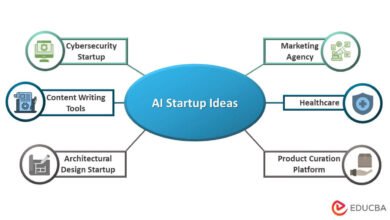Failed AI Startups What Went Wrong and What We Learned
Discover why 90% of AI startups fail. Learn critical lessons from failed companies, market mistakes, and strategies to avoid startup failures.

The AI startup landscape presents a paradox that has bewildered entrepreneurs and investors alike. While the global artificial intelligence market continues to grow exponentially, with projections reaching $826 billion by 2030, the failure rate for AI startups remains devastatingly high. Recent data reveals that approximately 90% of AI startups fail within their first year of operation—a rate that far exceeds traditional tech startups and demands urgent examination. As of 2024, there are approximately 70,000 AI startups worldwide, yet the vast majority never reach profitability or meaningful market traction.
This alarming statistic isn’t merely a curiosity for venture capital observers; it represents thousands of failed dreams, wasted capital, and valuable lessons waiting to be learned. Understanding why failed AI startups collapse is not just academically interesting—it’s practically essential for entrepreneurs, investors, and business leaders seeking to build sustainable ventures in this competitive space. The path to AI startup success is paved with the cautionary tales of companies that raised millions, hired brilliant teams, and built impressive technology, only to discover that innovation alone cannot guarantee survival. By dissecting the fundamental mistakes that led to these AI startup failures, we can extract patterns and principles that transform what appears to be random collapse into predictable, avoidable errors. This article explores the critical factors behind failed AI startups, examines real-world examples of shutdown companies, and provides actionable insights that separate thriving ventures from those destined for the startup graveyard.
The Alarming Statistics Behind AI Startup Failures
The numbers tell a compelling story about the AI startup failure rate in today’s competitive market. Approximately 90% of AI startups fail within their first year of operation, establishing a failure rate that exceeds traditional software startups by a significant margin. The overall failure rate for AI and tech startups has reached 92%, representing a 2-point increase in product-market fit challenges. This represents more than just a statistical anomaly—it reflects fundamental challenges in building AI startup business models that resonate with market realities.
The cascade of AI startup failures accelerated notably in 2024 and 2025. In the first quarter of 2024 alone, 254 venture-backed startups filed for bankruptcy, representing a 60% jump from 2023 and over 7x the rate in 2019. More specifically, AI startups burn through capital at rates that would make even the most profligate crypto founders blush, with most failing to survive their first birthday. These statistics reveal that the challenges facing AI startups extend beyond the typical startup obstacles; they are magnified by the unique complexities of artificial intelligence technology and market dynamics.
Furthermore, while 30% to 40% of VC-backed startups fail, AI startups have a much higher failure rate, with 90% failing to survive within their first year. This threefold increase in failure probability demands investigation into the specific reasons why AI-powered startups fail at such disproportionate rates compared to their non-AI counterparts.
Poor Product-Market Fit: The Primary Culprit
When analyzing AI startup failure reasons, poor product-market fit emerges as the dominant cause across virtually every sector and business model. 34 percent of startups that fail report a poor product-market fit, while 22% falter because of inadequate marketing strategies, establishing product-market alignment as the most critical success factor.
The fundamental problem stems from how many AI startup founders approach product development. Rather than identifying genuine customer problems and building solutions, they frequently engage in the opposite sequence: creating impressive technology and then searching for problems to justify the innovation. One notable lesson from failed startups emphasizes that a business must identify a substantial, real-world problem first rather than creating a problem to fit a technology.
Real-World Examples of Market Fit Failures

Consider Jibo, a social robot startup that became a canonical example of failed AI startup lessons. Jibo, a social robot startup, failed despite significant media attention and initial funding because consumers found the robot’s capabilities limited and not essential enough to justify the cost. The company had developed sophisticated technology, but fundamentally misread consumer demand for social robots.
Similarly, ImageForge learned this lesson too late—they spent $2 million training a generative art model and only $20,000 on user acquisition, resulting in a user base that never exceeded 500 people. Meanwhile, Midjourney built comparable capabilities with superior community focus and now serves hundreds of millions of users, illustrating how market fit trumps technical superiority.
The Market Demand Challenge
Around 42% of startups fail due to a lack of market demand for their products or services, with many AI startups falling into this category as they often create solutions in search of a problem rather than addressing existing market needs. This distinction between innovation and utility determines whether AI startup companies achieve escape velocity or crash during launch.
Inadequate Funding and Unsustainable Burn Rates
Financial instability stands as another critical factor in understanding why AI startups fail. The nature of AI technology development demands substantial capital investment, creating a high-stakes financial environment where miscalculation proves immediately fatal.
The Cost of AI Development
AI development costs destroy traditional startup mathematics—training competitive language models requires $100+ million minimum, with GPU clusters consuming $50,000 monthly. These capital requirements fundamentally alter the startup funding equation, making efficient capital management essential for survival.
Burn Rate Mathematics
The collapse of companies like VisionAI illustrates the burn rate catastrophe. VisionAI had raised $80 million in 2024, hired 120 engineers, leased a $2 million GPU cluster, and opened offices in New York, London, and Singapore, only to discover when funding dried up that they had eighteen months of fixed costs and six months of cash before shuttering in February 2025.
Recent data reveals that AI startups now burn through $100 million in roughly 3 years, double the pace of previous cohorts. This acceleration means that even well-funded AI startup ventures face extreme pressure to demonstrate traction and revenue before capital inevitably depletes.
Global Funding Contraction
Global venture capital funding saw a significant decrease, dropping 42% from $381 billion in 2022 to $221 billion in 2023, fundamentally altering the funding landscape. This contraction directly contributed to around 44% of startups citing “running out of cash” as a primary factor in their downfall.
Marketing Failures and Communication Gaps
Marketing strategy for startups plays a surprisingly decisive role in AI startup survival. While technical innovation often receives disproportionate attention, the ability to communicate value and build market awareness determines whether anyone discovers the product.
The Insufficient Marketing Problem
22% of startup failures stem from inadequate marketing strategies, with the complex nature of AI technologies making it particularly challenging to convey benefits clearly and attract the right audience. This communication challenge becomes exponentially more difficult when the product category itself lacks a clear market precedent.
The Demo Trap
Many failed AI startups fell into what industry observers call “the demo trap.” Many failed AI startups churn out flashy demos that generate reams of press, but don’t solve real problems—for example, Quixey’s demos touted a deep learning-powered “search engine for apps,” but the company no longer exists.
Successful competitors distinguished themselves through market focus rather than technical showmanship. Successful startups like video AI tool Runway are laser-focused on their users’ gnarliest problems, going deep on discovery with video creators to find workflows that burn hours and dollars, then cutting the time and cost by 10x.
Operational Inefficiencies and Team Dysfunction
Beyond market and financial factors, internal operational challenges contribute significantly to AI startup shutdowns. Team issues and financial problems account for 18% and 16% of failures, respectively, though the actual impact likely exceeds these baseline statistics.
Leadership and Execution Failures
Poor leadership creates cascading failures throughout organizations. Successful AI startup companies require diverse teams combining technical expertise with business acumen, customer understanding, and operational discipline. When founding teams lack this balance, execution deteriorates regardless of technology quality.
The Misalignment of Incentives
Many successful startups like Anthropic stay laser-focused on their target user and use case, working on constitutional AI technology for years despite flashy new approaches emerging, allowing them to create some of the best LLMs available. This focus contrasts sharply with companies that chase technological trends rather than customer needs.
Misunderstanding the Competitive Moat
A critical miscalculation that has destroyed numerous AI startups involves overestimating the sustainability of competitive advantages in artificial intelligence markets.
The Rapid Technology Cycle
In traditional software, competitive advantages can last years or even decades, but in AI, they vanish faster than a TikTok trend. Companies that built defensible positions around proprietary models discovered their advantages evaporated overnight when a larger competitor released superior foundation models.
TextGen Pro invested eighteen months and $3 million developing proprietary marketing copy generation technology, but when Meta casually released Llama 2 for free on a Tuesday morning, overnight their “defensible” competitive advantage became commodity software, with their moat evaporating faster than their remaining runway.
The Wrapper Problem
A particularly insidious trap emerged for companies built entirely around wrapping existing AI models. Every token sent through a wrapper—paid or not—earns OpenAI money, and multiplying that by millions of freemium users means these startups become unpaid distribution arms, subsidizing OpenAI’s growth while bleeding out.
Regulatory and Compliance Obstacles
As AI technology gained prominence, regulatory frameworks caught up, creating barriers that destroyed several AI startup ventures despite strong underlying technology.
Emerging Regulatory Requirements
AI regulation isn’t approaching—it’s here, wielding enforcement powers that can obliterate companies overnight. HealthPredict spent two years building FDA-approved diagnostic imaging software, only to watch their European expansion die instantly when GDPR 2.0 passed, requiring algorithmic explainability that their neural networks couldn’t provide.
This regulatory surprise represents a critical AI startup risk factor that founders and investors frequently underestimate during business planning.
Key Lessons from AI Startup Failures

Extracting value from AI startup failures requires identifying patterns and principles that distinguish successes from collapses.
Lesson 1: Start with Pain, Not Technology
Identify problems customers will pay to solve, then determine if AI can solve them better than existing alternatives, as most founders reverse this sequence and wonder why nobody buys their “revolutionary” solution.
Lesson 2: Validate Demand Before Building Supply
Secure three paying customers before writing your first line of training code to ensure genuine market demand precedes massive capital investment.
Lesson 3: Avoid the Shiny Object Syndrome
Argo AI raised billions of dollars to build self-driving tech, but after 6 years, the company realized the tech wasn’t ready for public roads and is now gone, while successful startups stay laser-focused on their target user and use case.
Lesson 4: Turn Prototypes into Products
The Rabbit and Humane mistake involved having good demos and commercials, but the AI devices didn’t live up to the hype in real-world applications—successful AI startups make demos replicable in reality.
Lesson 5: Build Sustainable Business Models
The wrong monetization strategy caused startups to dig deeper into debt with every newly acquired customer, with many founders failing to define long-term, sustainable monetization strategies. Companies must establish clear paths to profitability rather than pursuing growth at any cost.
How Successful AI Startups Avoided These Pitfalls
Understanding what separates successful AI startups from failures provides valuable guidance for entrepreneurs navigating this treacherous landscape.
The Cohere Model
Cohere bootstrapped for 2 years before raising a $40M Series A, allowing them to deeply validate their self-serve model and hit $1M ARR before taking on VC funding. This conservative approach contrasts sharply with companies like Olive AI and Inflection, which each raised a billion or more without achieving product-market fit and now barely exist.
Anthropic’s Focused Approach
Despite the allure of rapidly evolving AI capabilities, Anthrop maintains an unwavering focus on constitutional AI development, creating one of the market’s most respected large language models through disciplined execution rather than feature chasing.
Runway’s Customer Obsession
By investigating video creators’ actual pain points and building solutions directly addressing those problems, Runway distinguished itself through customer-centric innovation rather than technological sophistication alone.
Forward-Looking Strategies for AI Startups
For entrepreneurs committed to building AI startup ventures, these lessons translate into actionable strategies.
1. Prioritize Product-Market Fit Above All Else
Spend time validating that customers genuinely need your solution before scaling infrastructure. Conduct extensive market research, talk to potential users, and iterate rapidly based on feedback. Lack of focus can lead to overreacting to market feedback and launching too many products with too many features in too many markets, leading to fragmentation and unclear product-market fit.
2. Build Interdisciplinary Teams
Diverse teams with complementary skills combining technical expertise, behavioral economics understanding, anthropological perspective, psychology knowledge, and human-technology interaction expertise are crucial for success in the rapidly evolving tech landscape.
3. Establish Clear Monetization Strategies
15% of AI solutions are now using a price-per-outcome model, reflecting a more accurate value proposition than traditional SaaS pricing formulas. Companies must establish monetization approaches aligned with actual customer value creation.
4. Manage Capital Ruthlessly
Plan your funding runway carefully, maintaining sufficient capital to reach key milestones. With the average time between Seed and Series A being 18 months, ensure you have sufficient capital before you need to raise again.
5. Stay Adaptable But Focused
Successful startups balance focus with adaptability, maintaining strategic clarity while remaining responsive to market signals. Embrace data-driven iteration, with successful startups continuously refining their products based on user feedback and metrics, often making significant pivots in their early years.
More Read: Why AI Startups Are Disrupting Traditional Industries Faster Than Ever
Conclusion
The failures of AI startups tell a story not of technological inadequacy but of entrepreneurial misdirection. While approximately 90% of AI startups fail within their first year, these failures stem not from impossible odds but from predictable mistakes: pursuing innovation without customer demand, burning capital unsustainably, underestimating competitive dynamics, neglecting marketing communication, and allowing regulatory surprises. The companies that successfully navigate the AI startup landscape distinguish themselves through disciplined focus on solving real customer problems, building sustainable business models, maintaining capital discipline, and assembling diverse teams capable of executing effectively.
For entrepreneurs committed to building lasting AI startup companies, the path forward involves learning from these failures, validating market demand before scaling operations, establishing clear competitive differentiation beyond technology, and maintaining relentless focus on customer value creation rather than technological prowess. The AI startup failure rate remains daunting, but understanding the specific reasons behind these collapses transforms statistical inevitability into avoidable pitfalls. Success in artificial intelligence entrepreneurship requires matching technological capability with business discipline, customer obsession, and strategic focus—transforming brilliant innovations into sustainable enterprises that create genuine value in the marketplace.











